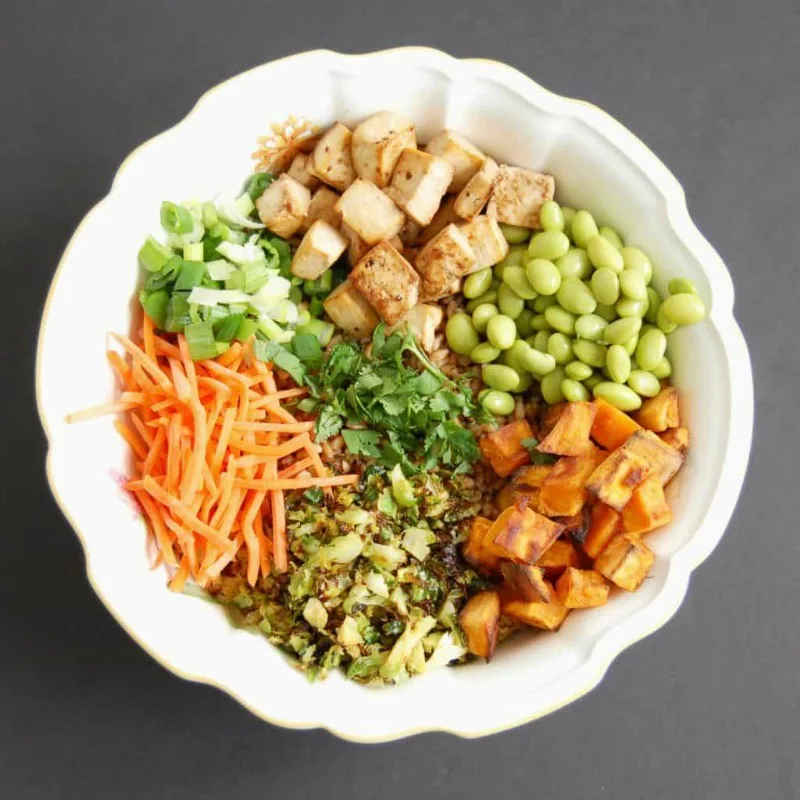 Today’s post is a guest post from the amazing Jessica Levinson, MS, RDN, CDN whose site JessicaLevinson.com is full of great ideas for feeding your family, as well as recipes that are to die for! She is here to share her tips for how to get your kids to eat more vegetables– and who doesn’t need help with that?!
Today’s post is a guest post from the amazing Jessica Levinson, MS, RDN, CDN whose site JessicaLevinson.com is full of great ideas for feeding your family, as well as recipes that are to die for! She is here to share her tips for how to get your kids to eat more vegetables– and who doesn’t need help with that?!
“Eat your veggies!”
Do you hear yourself saying this to your kids at least once a day?
As a mom of school-age children, I know it’s not so easy to get those servings of produce into the kids’ diets. Granted, fruit is easier than veggies since it’s naturally sweet, but if the options on the table are crackers and crudité or cookies and fruit, the majority of kids (certainly mine) will go for the crackers and cookies if given free reign.
It wasn’t always that way – when my twin girls were two and three they ate pretty much anything I put in front of them, but times have changed. Peer influence and more exposure to food outside of the home have led to decreased veggie intake.
I’d be lying if I said I don’t get frustrated by this change and occasionally push them too hard about eating their veggies. However, my professional self knows that food preferences ebb and flow and forcing certain foods (i.e., produce) and restricting preferred foods (i.e., treats) doesn’t work and can backfire.
So what can parents do to ensure kids are eating balanced plates? Here are my top 10 tips to get kids to eat more vegetables:
1) Lead by example. Whether it’s how you want your children to act or eat, role modeling the behavior you expect is the best way to instill these habits. There are many benefits to family meals, and having your kids see what you eat is just one of them. The more they see you eating those veggies, the more likely they are to try them too.
2) Make a veggie of the week. Bring the kids with you to the supermarket and let them pick out one new vegetable to try. Throughout the week, serve that veggie in a variety of ways – raw, steamed, roasted, in soup, or with pasta. You can even make a taste-testing worksheet so everyone can write thoughts on the different preparations.

4) Present them when kids are hungriest. Do your kids come off the school bus starving and begging for a snack? Mine sure do! That’s the perfect time to put out a bowl of veggies and dip. Have a veggie plate all ready when they walk in the door and if they whine for something else you can prep it while they start on the veggies.
5) Make it flavorful. You may think steamed veggies are the healthiest, but it’s rare to find a kid (let alone an adult) who will devour a plate of them. Remember that food is meant to be enjoyed and how you cook those vegetables goes a long way to improving their intake. Roasting is my favorite way to prep veggies and the most kid-friendly in my experience.
6) Add veggies to well-liked dishes. I’m not talking about sneaking them in, but adding sautéed spinach and mushrooms to pasta sauce or mixing pureed butternut squash into cheese sauce for your kids’ favorite mac and cheese can boost veggie intake a little less noticeably. For vegetables that are more hidden, I always let my girls know what’s in the dish after they have eaten it. They are often surprised by what’s inside!
7) Make one meal. Aka, don’t be a short order cook. This tip goes well beyond vegetable intake – serve one meal a night (one protein, one carbohydrate, and one or two vegetables) and let the kids fill their plates from what is on the table. If they are truly hungry they will eat what’s offered or they can wait until the next meal.

9) Keep dinner separate from dessert. In other words, don’t reward veggie intake (or any other behavior) with a treat. One bite rules and enforcing the clean the plate club tend to backfire over time and can undermine the end goal. Whether kids get dessert should not be contingent on what they eat at dinner. I suggest setting a separate guideline for treats in the house.
10) Keep offering them. I know it’s absolutely exhausting and frustrating to make and serve food to your kids over and over again just to end up throwing it in the garbage, but acceptance of new food takes time. And while they’re trying new veggies, keep putting their favorites in front of them. You don’t want your kids to turn orange, but if carrots are the only vegetable they’ll eat, let them have some every day!
Jessica Levinson, MS, RDN, CDN is a nationally recognized nutrition expert with a focus on culinary nutrition and communications. Jessica’s passion lies in the kitchen, where she develops nutritious and delicious recipes to feed her family and inspire others to do the same. You can find Jessica’s recipes, school lunchbox ideas, and healthy living tips on her website JessicaLevinson.com. Follow her on Instagram, Facebook, and Pinterest.

10 Tips to Get Kids to Eat Vegetables - Mya's Happy Life
Thursday 17th of March 2022
[…] recently shared these tips (plus more elaborate explanation of them) over at The Six O’Clock Scramble, an online family meal planning service targeted at busy moms and dads who want to put healthy […]